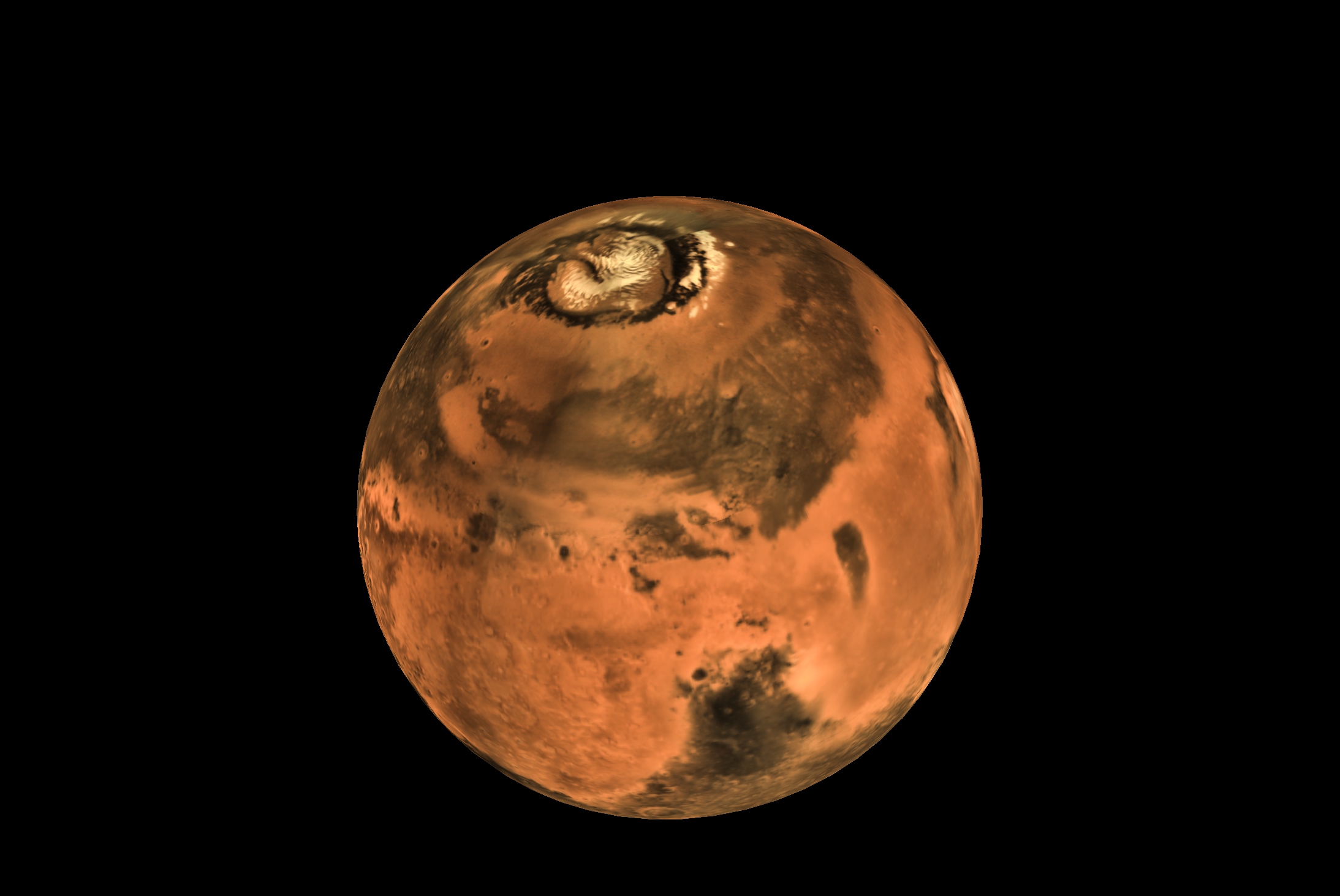
Image from Mars global mosaic. Picture from Mars Colour Camera (MCC) onboard India's Mars Orbiter Spacecraft. Photo: ISRO.
BENGALURU (PTI): The country's low-cost Mars spacecraft completed 1,000 Earth days in its orbit on Monday, well beyond its designed mission life of six months or 180 days.
"The Mars Orbiter Mission (MOM) completes 1,000 earth days in its orbit, today (June 19, 2017) well beyond its designed mission life of six months," the Indian Space Research Organisation (ISRO) said.
It said 1,000 earth days correspond to 973.24 Mars Sols (Martian Solar day) and the MOM completed 388 orbits.
The satellite is in good health and continues to work as expected, it said, adding that scientific analysis of the data received from the spacecraft is in progress.
India had on September 24, 2014 successfully placed the spacecraft in the orbit around the Mars in its very first attempt, joining an elite club of countries with expertise in space technology.
The ISRO had launched the spacecraft on its nine-month- long odyssey on a homegrown PSLV rocket from Sriharikota in Andhra Pradesh on November 5, 2013 and it had escaped the Earth's gravitational field on December 1, 2013.
Citing surplus fuel as the reason, the ISRO had in March 2015 first announced that the spacecraft's life was extended by another six months.
Later in June 2015, its Chairman A S Kiran Kumar had said it has enough fuel for it to last "many years".
The Rs 450-crore MOM was launched to study the Martian surface and mineral composition, and scan its atmosphere for methane, an indicator of life on the Red Planet.
The spacecraft has five scientific instruments - Lyman Alpha Photometer (LAP), Methane Sensor for Mars (MSM), Mars Exospheric Neutral Composition Analyser (MENCA), Mars Colour Camera (MCC) and Thermal Infrared Imaging Spectrometer (TIS).
The Mars Colour Camera, one of the scientific payloads onboard MOM, has produced more than 715 images so far, the ISRO said.
During the mission, the spacecraft has gone through a communication 'blackout' as a result of solar conjunction from June 2, 2015 to July 2, 2015.
It experienced the 'whiteout' geometry (when the Earth is between the Sun and the Mars and too much solar radiation may make it impossible to communicate with the Earth) during May 18 to May 30, 2016.
An orbital manoeuvre was also performed on the MOM spacecraft to avoid the impending long eclipse duration for the satellite.
The ISRO had also launched MOM Announcement of Opportunity (AO) programmes for researchers in the country to use MOM data for research and developoment.
To expand inter-planetary research, the ISRO is seeking scientific proposals for Mars Orbiter Mission-2, the government had said in November last year.
 Previous Article
Previous Article Next Article
Next Article













The Indian Air Force, in its flight trials evaluation report submitted before the Defence Ministry l..
view articleAn insight into the Medium Multi-Role Combat Aircraft competition...
view articleSky enthusiasts can now spot the International Space Station (ISS) commanded by Indian-American astr..
view article